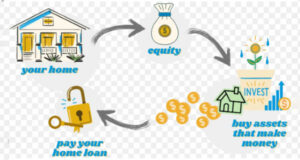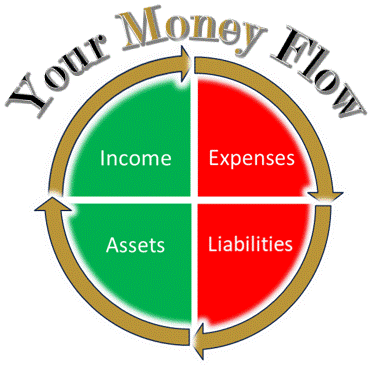 Debt recycling is a financial strategy that involves converting non-deductible debt, such as a home loan, into tax-deductible investment debt. The goal is to pay off the non-deductible debt as quickly as possible while building wealth in a tax-effective way over the long term. Here are three examples of how debt recycling works:
Debt recycling is a financial strategy that involves converting non-deductible debt, such as a home loan, into tax-deductible investment debt. The goal is to pay off the non-deductible debt as quickly as possible while building wealth in a tax-effective way over the long term. Here are three examples of how debt recycling works:
- Splitting a home loan: A borrower splits their home loan into two loans and uses the equity in their home to pay off the smaller loan. This allows the borrower to claim a tax deduction on the interest paid on the smaller loan.
- Replacing non-tax-deductible debt with tax-deductible debt: A borrower replaces the non-tax-deductible debt over their home with the tax-deductible debt of an investment loan. This can help the borrower pay off their home loan sooner, minimize their tax payments, and grow their wealth.
- Using equity from a home to invest in income-producing assets: A borrower uses equity from their home to invest in income-producing assets with the possibility of growth. This strategy can help the borrower build wealth over the long term while minimizing their tax payments.
Some of the benefits of debt recycling:
- Pay off your home loan sooner: By using debt recycling to attack your home loan debt, you can often pay off your home loan faster than you would otherwise be able to.
- Grow your wealth: By investing in other assets, you can enjoy any capital gains these make. This can help you build wealth over the long term.
- Shift your loan interest from non-deductible to tax-deductible: Debt recycling allows you to replace non-tax-deductible debt over your home with the tax-deductible debt of an investment loan. This can help you minimize your tax payments and grow your wealth.
- Save on tax: By turning non-deductible debt into debt that comes with tax benefits, you can save on tax payments.
- Gain exposure to growth assets: Debt recycling allows you to invest immediately rather than waiting for the mortgage to be paid off, allowing the power of compounding earnings to start working earlier. This can help you gain exposure to growth assets.
Some of the main risks/drawbacks of debt recycling:
- Poor performing investments: If your investment doesn’t perform well, you’ll have an investment loan to deal with and no returns to help you out.
- Taking on more debt: Having more loan repayments can become overwhelming if not managed well.
- Shifting costs: The cost of this strategy will rise if interest rates increase.
- Increased losses due to debt recycling leverage: Leverage magnifies both gains and losses.
- Increased interest rate of investment loan: With debt recycling, there might be a rise in the interest rate of your loan.
- Loss of income: You may lose your home if you are unable to meet your mortgage repayments.
- Time constraint: Debt recycling is not recommended for anyone with an investment timeframe of less than seven years.
A word of warning
Please note that debt recycling is considered a high-risk strategy because it involves using borrowed money to invest and using one’s own home to secure that debt. If the investment performs poorly or interest rates increase, the borrower could face significant financial stress or even put their family home at risk. Please seek professional financial advice before undertaking this strategy.

